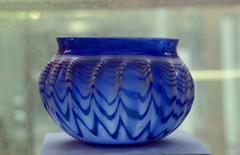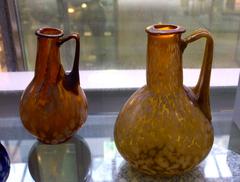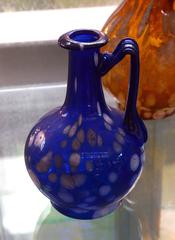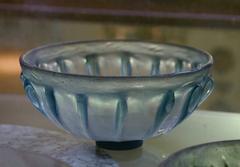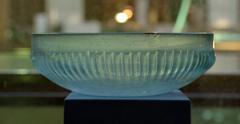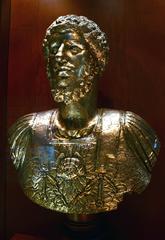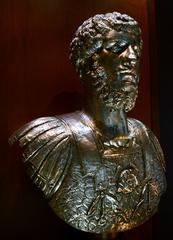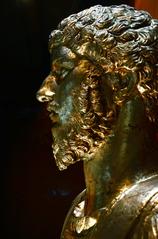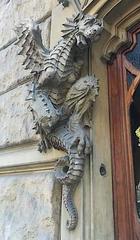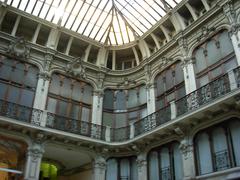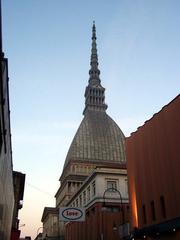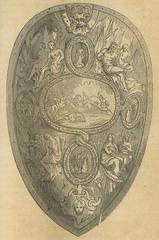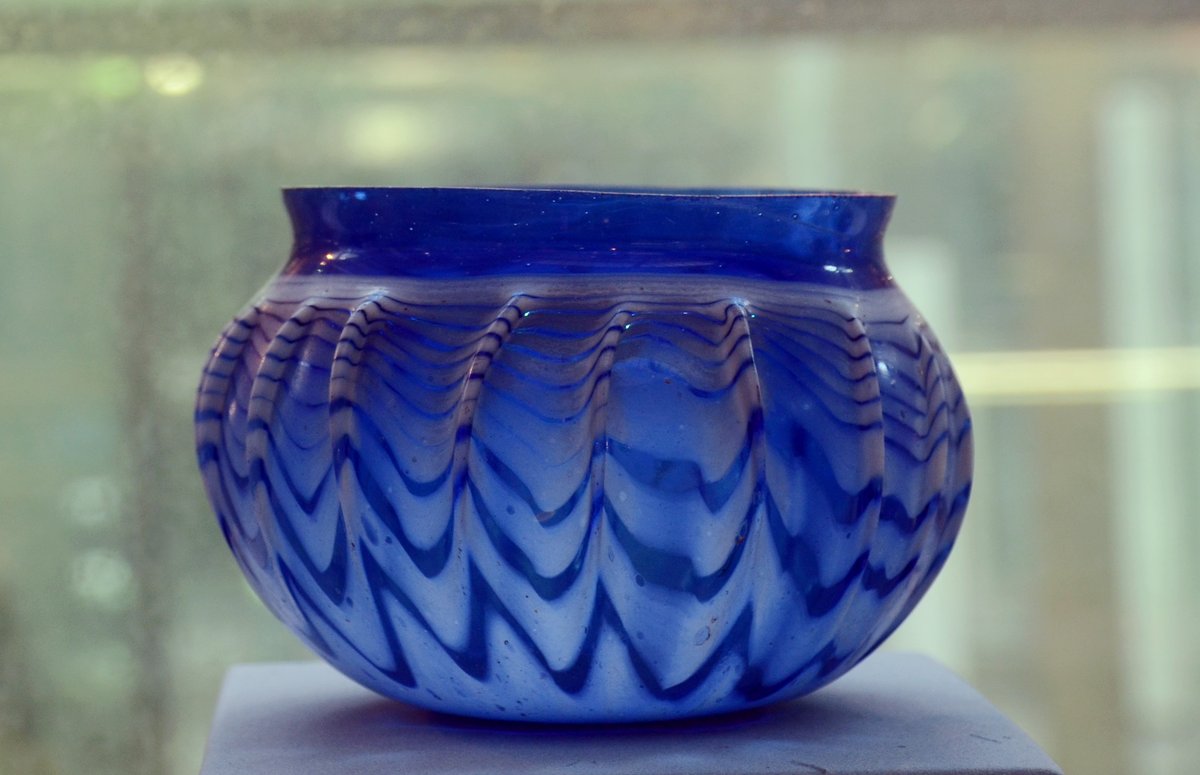
Comprehensive Guide to Visiting Manica Nuova di Palazzo Reale, Chieri, Italy
Date: 01/08/2024
Introduction
The Manica Nuova di Palazzo Reale in Chieri, Italy, is a historic architectural marvel that encapsulates the rich heritage of the region. Constructed between 1899 and 1903 under the guidance of court architect Emilio Stramucci, this extension of the Royal Palace of Turin was built on the site of the former Palazzo di San Giovanni along Via del Seminario, now known as Via XX Settembre (Museo Torino). Originally serving as the offices and apartments for high-ranking officials of the Royal Household, the Manica Nuova underwent significant transformations over the years, including extensive renovations in the 1970s and a complete restoration by 2014 to repurpose it as a major museum space. Today, it houses the Galleria Sabauda, a prestigious art gallery that showcases over 800 artworks from various European schools, making it a vital cultural and historical landmark (Live the World). Visitors to the Manica Nuova can explore its historical grandeur, architectural significance, and artistic treasures while enjoying a comprehensive and enriching experience. This guide provides detailed information on visiting hours, ticket prices, travel tips, and more to help you plan an unforgettable visit to this remarkable site.
Table of Contents
- [Architectural Genesis and Early Development](#architectural-genesis-and-early-developmentarchitectural-genesis-and-early-development)
- [Purpose and Initial Use](#purpose-and-initial-usepurpose-and-initial-use)
- [Mid-20th Century Transformations](#mid-20th-century-transformationsmid-20th-century-transformations)
- [Impact of World War II](#impact-of-world-war-iiimpact-of-world-war-ii)
- [Restoration and Modern Use](#restoration-and-modern-userestoration-and-modern-use)
- [The Galleria Sabauda](#the-galleria-sabaudathe-galleria-sabauda)
- [Architectural Significance](#architectural-significancearchitectural-significance)
- [Notable Artworks](#notable-artworksnotable-artworks)
- [Accessibility and Visitor Experience](#accessibility-and-visitor-experienceaccessibility-and-visitor-experience)
- [Visitor Tips](#visitor-tipsvisitor-tips)
- [Visitor Information](#visitor-informationvisitor-information)
- [Frequently Asked Questions (FAQ)](#frequently-asked-questions-faqfrequently-asked-questions-faq)
- [Educational and Research Opportunities](#educational-and-research-opportunitieseducational-and-research-opportunities)
- [Preservation and Conservation Efforts](#preservation-and-conservation-effortspreservation-and-conservation-efforts)
- [Community Engagement](#community-engagementcommunity-engagement)
- [Economic Impact](#economic-impacteconomic-impact)
- [Future Prospects](#future-prospectsfuture-prospects)
- [Conclusion](#conclusionconclusion)
- [References](#referencesreferences)
Architectural Genesis and Early Development
The Manica Nuova di Palazzo Reale, located in Chieri, Italy, is a significant architectural extension of the Royal Palace of Turin. The construction of this wing was initiated in 1899 and completed in 1903, under the direction of the court architect Emilio Stramucci. The site chosen for this new wing was previously occupied by the Palazzo di San Giovanni, situated along Via del Seminario, now known as Via XX Settembre (Museo Torino).
Purpose and Initial Use
Upon its completion, the Manica Nuova served multiple functions. It housed the offices of the Royal Household, including the apartments for the Minister of the Royal Household, the Grand Equerry, the Grand Hunter, and the Prefect of the Palace. Additionally, the first floor’s grand halls were allocated to the Order of Malta, while other sections were used for royal offices and hospital functions (Museo Torino).
Mid-20th Century Transformations
The Manica Nuova underwent significant changes during the mid-20th century. In the 1970s, the building was granted to the Piedmont Region, which undertook extensive renovations to convert it into office spaces. This transformation continued until the late 1980s, after which the building was decommissioned from its office use (Museo Torino).
Impact of World War II
The Manica Nuova was not spared from the ravages of World War II. The wing facing Via XX Settembre sustained damage from bombings in December 1942 and July 1943. These attacks caused partial roof collapses, wall and vault damages, and destruction of window fixtures. At that time, the building housed 29 apartments, 2 offices, a communal living space, and a guest room, totaling 117 rooms (Museo Torino).
Restoration and Modern Use
In December 2014, after extensive restoration and restructuring, the Manica Nuova was repurposed as a major museum space within the Royal Palace complex. It now hosts the Galleria Sabauda, which features a new exhibition layout. This transformation has made the Manica Nuova a central part of the Royal Museums, enhancing its cultural and historical significance (Museo Torino).
The Galleria Sabauda
The Galleria Sabauda, housed within the Manica Nuova, is a treasure trove of art, showcasing over 800 artworks from various European schools. Established by King Carlo Alberto on October 2, 1832, the gallery initially displayed the House of Savoy’s collection of paintings. Over time, it expanded to include works from the Royal Palace of Turin, the Savoy-Carignano picture gallery, and the Palazzo Durazzo in Genoa (Live the World).
Architectural Significance
The Manica Nuova itself is an architectural marvel, adding to the overall experience of visiting the Galleria Sabauda. The recent move to this location in 2014 provided a modern and fitting space to showcase the collection. The gallery is open to the public from Tuesday to Sunday, with the best times to visit being weekdays or early mornings to avoid crowds (Live the World).
Notable Artworks
Among the many treasures housed in the Galleria Sabauda, several artworks stand out. Highlights include a polyptych by Giovanni Canavesio, “Madonna col Bambino e I Santi” by Andrea Mantegna, and “La Cena” by Paolo Veronese. Additionally, visitors can admire a breathtaking panorama of Turin in the 18th century, painted by Bernardo Bellotto (Live the World).
Accessibility and Visitor Experience
The Manica Nuova is designed to be accessible to all visitors. The Royal Palace’s main floor is directly accessible from the ticket office, and from there, visitors can access the exhibitions. The museum shop, located on the first floor of the Manica Nuova, offers publications related to the collections and exhibitions (Musei Reali).
Visitor Tips
For a memorable visit, it is recommended to plan your trip during weekdays or early mornings to avoid crowds. The Galleria Sabauda is closed on Mondays and certain public holidays, so checking the schedule in advance is advisable. Additionally, visitors can enjoy a break at the Caffè Reale, located in the Royal Gardens, which offers a unique and elegant setting for refreshments (Musei Reali).
Visitor Information
- Visiting Hours: Tuesday to Sunday, 9 AM to 7 PM. Closed on Mondays and certain public holidays.
- Ticket Prices: Adults €12, Reduced €6, Free for children under 18.
- Location: Via XX Settembre, Chieri, Italy.
- Nearby Attractions: Other parts of the Royal Palace complex, Chieri Cathedral, and the historic center of Chieri.
Frequently Asked Questions (FAQ)
Q: What are the Manica Nuova visiting hours?
A: The Manica Nuova is open from Tuesday to Sunday, 9 AM to 7 PM and closed on Mondays and certain public holidays.
Q: How much are the tickets for the Manica Nuova?
A: Ticket prices are €12 for adults, €6 for reduced tickets, and free for children under 18.
Q: Are there any nearby attractions?
A: Yes, visitors can explore other parts of the Royal Palace complex, Chieri Cathedral, and the historic center of Chieri.
Q: Is the Manica Nuova accessible to all visitors?
A: Yes, the Manica Nuova is designed to be accessible to all visitors, with direct access from the ticket office and facilities to accommodate everyone.
Educational and Research Opportunities
The Manica Nuova also serves as a hub for educational and research activities. The museum frequently collaborates with academic institutions to host lectures, workshops, and seminars that delve into various aspects of art history, archaeology, and cultural studies. These initiatives not only enhance the visitor experience but also contribute to the broader academic discourse on these subjects (Academia.edu).
Preservation and Conservation Efforts
Significant efforts have been made to preserve and conserve the Manica Nuova and its collections. The building underwent extensive restoration in the early 21st century, which included structural reinforcements and the installation of modern climate control systems to protect the artworks (Museo Torino). These measures ensure that the Manica Nuova remains a safe and stable environment for both the artifacts and the visitors.
Community Engagement
The Manica Nuova actively engages with the local community through various outreach programs. These include guided tours, interactive exhibits, and special events that aim to foster a deeper appreciation for the region’s rich cultural heritage. By involving the community in its activities, the Manica Nuova helps to cultivate a sense of pride and ownership among the residents of Chieri and the surrounding areas (Musei Reali).
Economic Impact
The Manica Nuova also has a significant economic impact on the region. As a major tourist attraction, it draws visitors from around the world, contributing to the local economy through tourism-related activities such as hospitality, dining, and retail. The museum’s events and exhibitions also attract scholars, researchers, and art enthusiasts, further boosting the local economy (Wikipedia).
Future Prospects
Looking ahead, the Manica Nuova is poised to continue its role as a cultural and educational beacon. Plans are underway to expand its exhibition spaces and introduce new technologies that will enhance the visitor experience. These developments will ensure that the Manica Nuova remains at the forefront of cultural preservation and education, continuing to inspire and educate future generations (Musei Reali).
Conclusion
The Manica Nuova di Palazzo Reale in Chieri, Italy, is a testament to the rich history and cultural heritage of the region. From its origins as a royal office space to its current role as a premier museum, the Manica Nuova continues to captivate visitors with its architectural beauty and artistic treasures. Whether you are an art enthusiast or a history buff, a visit to this remarkable site promises an unforgettable experience.
References
- Museo Torino. (n.d.). Manica Nuova di Palazzo Reale. Retrieved from Museo Torino
- Live the World. (n.d.). Galleria Sabauda. Retrieved from Live the World
- Wikipedia. (n.d.). Galleria Sabauda. Retrieved from Wikipedia
- Musei Reali. (n.d.). Servizi al Pubblico. Retrieved from Musei Reali
- Academia.edu. (n.d.). La Manica Nuova di Palazzo Reale: Un edificio nel rinnovamento urbano. Retrieved from Academia.edu
